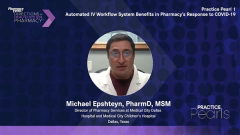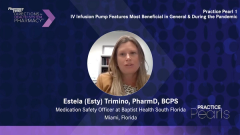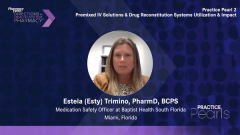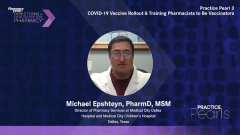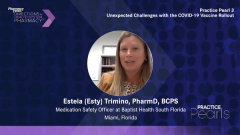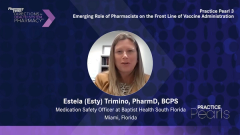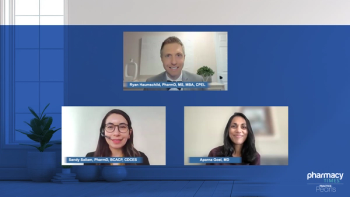
Practice Pearl 3: Strategies Implemented for the Vaccination of Health Care Workers
Madeline Camejo, PharmD, MS, leads discussion on vaccination of health care workers and the strategies implemented at their institutions to accomplish this task.
Episodes in this series

Madeline Camejo, PharmD, MS: We’re about 11 hospitals, from West Palm Beach down to the Keys, so we’re really big in south Florida. One of the things we did was try to centralize our vaccine pod because the first order was to make sure you vaccinated all your health care workers. We created 3 pods—1 in Homestead, close to the Keys; 1 in Miami-Dade; and 1 at the beginning area for Palm Beach—so we could maximize. Because trying to keep storage and do distribution for so many hospitals was logistically really hard, making sure you don’t have any expired vaccine and trying to keep count and continue to vaccinate. Not only that but also the mixing.
We have a Hilton hotel right next to 1 of our hospitals, and we actually sequestered that Hilton. We took over the conference rooms of the hotel, and 1 of the smaller conference rooms became the pharmacy mixing room. That was nice because it’s on the campus of our biggest hospital, which is over 1000 hospital beds. We centralized it so all our health care workers came through there. Pharmacy led most of the vaccine rollout. We were much more involved. We constantly had vaccine calls asking how many we were vaccinating. In Florida, trying to do shots and get the things we needed to do them was interesting. I wasn’t sure how we had a governor that bypassed the CDC [Centers for Disease Control and Prevention] on the pandemic. It was very different. I was wondering, how close to the true medication allotment did you have and get to do in Dallas vs Florida? Who were your first immunized health care workers?
Michael Epshteyn, PharmD, MSM: As far as whether we had enough?
Madeline Camejo, PharmD, MS: Yes.
Michael Epshteyn, PharmD, MSM:We have been able to offer vaccine to all health care workers who chose to have it. We had early adopters who were super excited and wanted to be the first ones in line to get it. Of course, we have some more cautious folks who wanted to wait and see. We were able to offer it to them during the second wave. There may be some more health care workers who are deciding they want to obtain the vaccine. Similar to what you were explaining, Madeline, we have centralized employee clinics where the employees can get those vaccines. We did the bulk of them at each hospital location, and now it’s more centralized because it’s fewer numbers of employees each day. It made sense to consolidate to several locations in terms of running the vaccination clinic but also in terms of consolidating the supplies and getting the most out of it.
Transcript edited for clarity.
Newsletter
Stay informed on drug updates, treatment guidelines, and pharmacy practice trends—subscribe to Pharmacy Times for weekly clinical insights.

